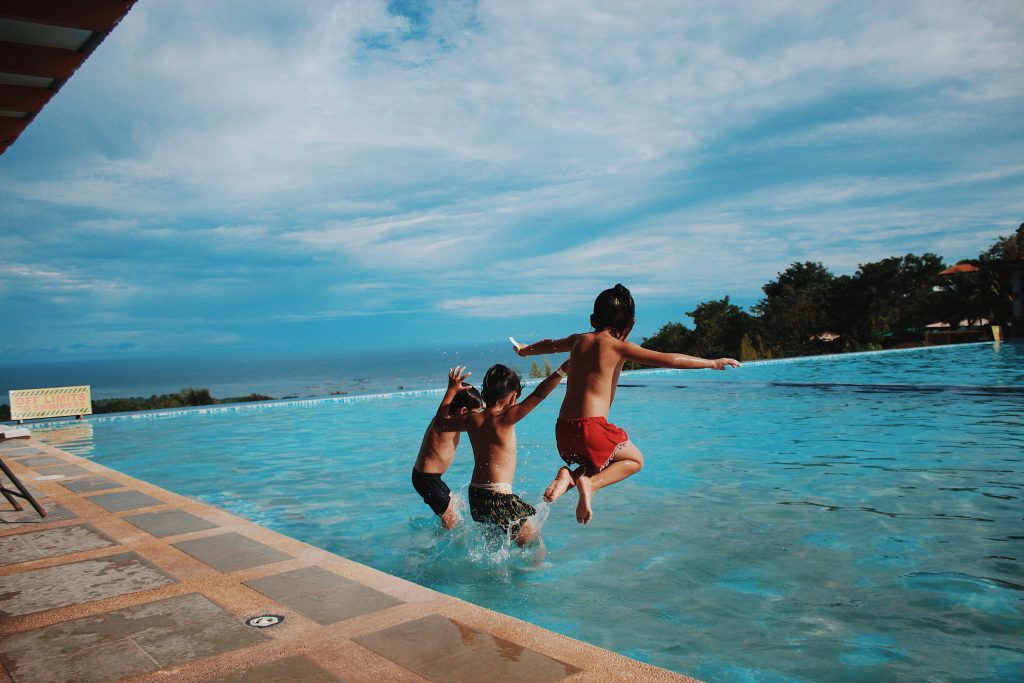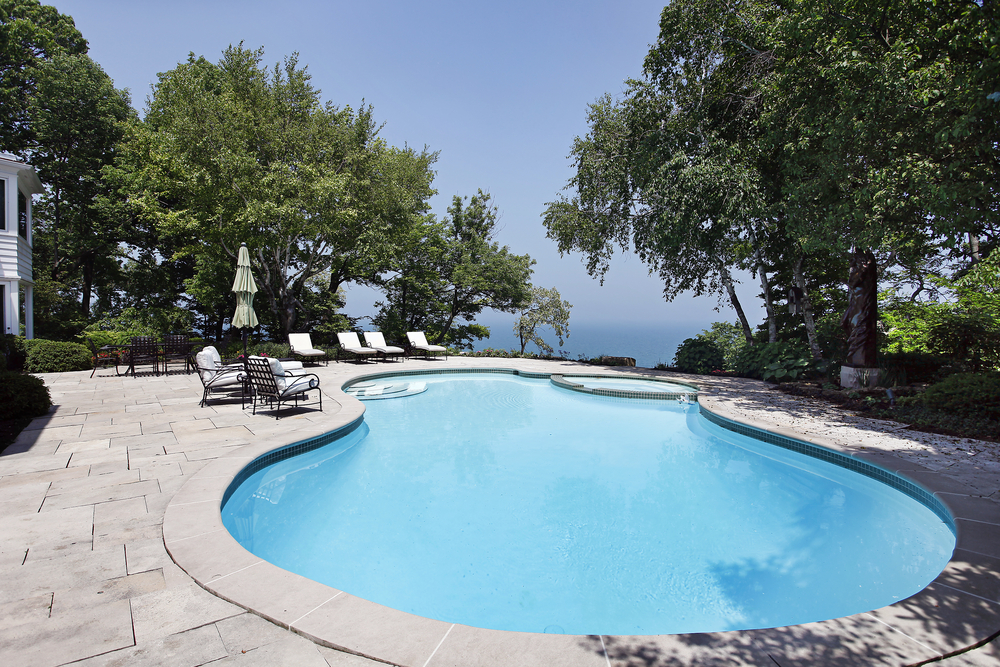Many swimming pool owners have been making a move from traditionally-cleaned and sanitized swimming pools using chlorine. They are are installing saltwater chlorinators instead. As a note, the saltwater chlorination system does clean the water with saltwater, but it does generate minimal amounts of chlorine for the sanitization process.
When you swim in a saltwater chlorinated and cleaned swimming pool you may feel your skin has a silky feeling when you get out of the water. The feeling of the silkiness of your skin is something that many pool owners say is the reason for making a switch to a saltwater system. Yes, the installation of a saltwater chlorination system will cost more than cleaning the pool with chlorine, but if you’re worried about the impact on the environment and about swimming in chlorine, that may be the reason to invest in the saltwater system.
As with other pools and depending on where you live, you might need to close the pool for the winter. You can swim longer during the season if you work with your pool contractor on the installation of a swimming pool heater. The extension of the pool season typically makes it a worthwhile investment for many pool owners because the cost of the pool makes them want to use it for as many days and months of the year as possible.

If you don’t have a pool water heater and aren’t planning to get one this season, you have either already talked with your pool contractor about closing the pool for the season. It is also necessary to close the pool properly for the season to protect the pool equipment and the pool itself. Also, a proper pool closing will make the pool opening easier and will also prevent algae from taking hold during the off-season.
Is Your Saltwater Pool Winter-Ready?
Keep in mind that in the cooler months of the year, a saltwater chlorinated pool turns more acidic than will a traditionally treated pool. The chlorinator will work harder, longer and will generate more salt which will impact the pH of the water.
What tasks will your pool contractor perform prior to, and during the closing, of your saltwater chlorinated pool? Here are just a fwe of the steps he will take:

- Saltwater levels will be manually tested by your contractor. He or she will add the necessary chemicals to bring the water chemistry in balance prior to the pool being closed; this is important because you don’t want to close a pool with water chemistry out of balance because that can lead to bacteria and algae growth. Don’t look at adding chemicals to a pool on the verge of being closed as “waste: because they are necessary to protect it during the dormant months.
- An anti-staining agent will also be added to the pool prior to its closing. The reason for this is that minerals from the saltwater generator could potentially settle on the bottom of the pool and cause staining of the fiberglass, vinyl liner or concrete and that could be difficult to remove.
- The saltwater chlorine generator will need to be winterized, according to the manufacturer’s instructions — this is something your pool contractor will understand how to do. If you’re closing the pool on your own, you will need to read the manual and winterize according to all the instructions. Some pool contractors recommend removing the generator for the off season. If you have a safe place to store it, it might make sense.
- The water levels will need to be lowered and they are typically lowered below the skimmer basket. Your pool contractor is your best go-to resource for the answer to this question.
- Once the pool has been cleaned, chemically balanced and equipment removed and/or drained pool floats will be added to keep the water from completely freezing as this could damage the pool structure. After this is done, the pool cover will be put on and secured and your pool is put to rest for the off-season!
Even though the pool is closed, you will need to, and want to, make time to check on the pool throughout the season. Brush off snow on the cover to prevent it from being too heavy and pulling the cover in. If there is standing water, you will want to use a wet-dry vac to remove standing water.
